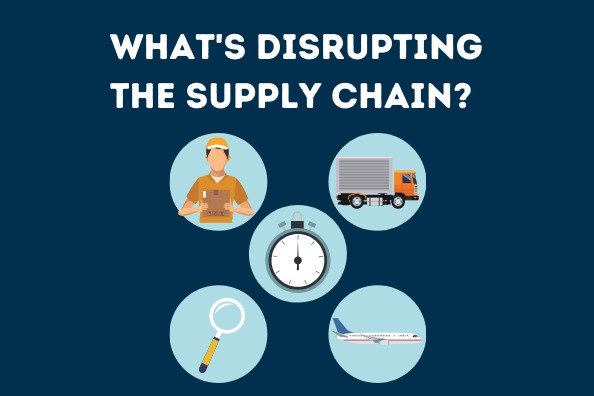
After two years of a global pandemic, many aspects of society are slowly returning to normal. However, one of the lingering effects of the pandemic-related work stoppages is a stalled supply chain. In March 2020, most businesses were disrupted in one way or another. Some stopped producing products, some sent their employees to work from home, and others shut down altogether. As a result, Elevator and HVAC businesses, who were deemed essential services, have been facing challenges with obtaining the equipment and components necessary for their customers, as well as finding the skilled labor needed to install them correctly. Unfortunately, these supply chain issues could be with us for a while.
What is the Supply Chain?
A supply chain is described as a system of organizations, people, activities, information, and resources involved in supplying a product or service to a consumer. Supply chain activities involve the transformation of natural resources, raw materials, and components into a finished product then delivered to the end customer.
What’s Disrupting the Supply Chain?
Labour Shortage
The largest contributing factor of the supply chain disruption is the global lack of workforce that is needed at every link in the complex supply chain. Businesses large and small, looking to get back to work, have found themselves unable to convince laid-off workers to return to their jobs or even attract new employees. Vaccine mandates have made it even more difficult as many workers have refused to get vaccinated. As the Delta and then Omicron variants worked their way through the population, workers got sick or had to take leave to care for other family members. The HVAC and Elevator industries deemed to be essential continued to operate, while staff shortages have taken a toll on productivity.
Skilled worker shortages have been around well before COVID, but the demand for staff including installers, technicians, managers, system designers, equipment salespeople, truck drivers and warehousing material handlers is becoming more significant every day.
Material Shortages
There are also shortages for the materials needed to build equipment, like copper, steel, aluminum, and plastic. All it takes is one missing piece and the entire process is delayed. The limited supply of semiconductor chips are one item that is causing major delays. Almost every electronic device requires a microchip, from video games to dishwashers, cars and air conditioning units. However, due to factories having to close its doors, manufacturers were forced to stop the development of microchips. The available inventory of microchips were quickly used up without being able to be replaced.
The chip shortage won’t last forever. Recently, Intel announced plans to build two new semiconductor plants in Arizona, but it will be months before these factories will be up and running.
Bottlenecks in shipping and air freight
Bottlenecks in shipping and air freight are adding further delays to the time it takes for key equipment to make it to companies and their technicians. HVAC Consultant Ian McTeer shared the following data in his article HVAC Supply Chain: Wounded, But Still a Marvel:
- Shipments of HVAC equipment assembled in Asia typically take 31 to 57 days when shipped across the ocean in fully loaded containers: they’re now taking upwards of 70 days.
- Container ports are dealing with unprecedented traffic combined with staff shortages and lack of warehousing space.
- Empty containers are not being returned to Asia fast enough.
- A container ship grounded in the Suez Canal along with the shutdown of a key port in China left an additional 350,000 containers of general merchandise choking ports last summer.
- Container freight costs have ballooned from an average pre-COVID price of $1,600 per fully loaded unit to over $20K in September 2021.
- 35% of the world’s trade is now shipped by air freight, half of that in passenger aircraft.
- When passenger air traffic essentially stopped in early 2020, air freight shipments declined causing backlogs, especially with delicate and time-sensitive shipments.
- At the time, air carriers had approximately 2,000 aircraft globally dedicated strictly to air freight; more than 2,500 passenger aircraft were pressed into service for air cargo.
- Trucking companies report customers are taking longer to unload containers (dwell time) due to a shortage of workers to handle the containers.
- Not to mention a shortage of truck drivers.
- Railroads are restricting transportation of containers from the west coast ports because there are stacks of unloaded containers jamming their inland hubs.
Inflation
Adding to this, record inflation is driving up costs along the entire supply chain.
Perhaps the worst part of the supply chain nightmare is no one’s quite sure when it will end. COVID-19 has stressed all links in the chain, and these issues take time to resolve. Global supply chain slowdowns provide uncertainty in delivery dates and pricing for any number of products and materials including lumber, aluminum, computer chips and steel. Until the supply chain bottleneck ends, it will continue to be a challenging time for all industries.
FIELDBOSS stays current on industry trends to keep you informed on what’s happening in the service industry world. Read our blog and sign up for our newsletter for all the latest news.